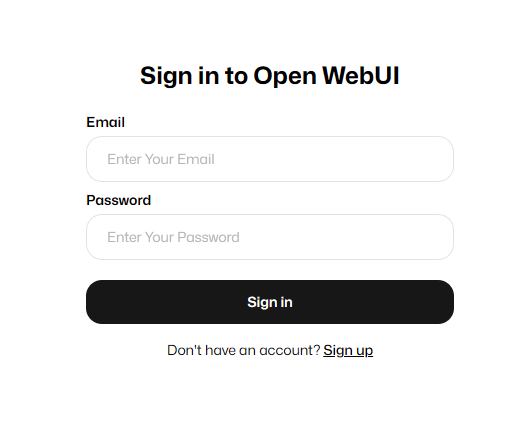How To Install Open WebUI on AlmaLinux 9

Open WebUI is a powerful interface designed to streamline web application development. Its user-friendly features make it an excellent choice for developers looking to enhance their workflow. AlmaLinux 9, a stable and secure Linux distribution, serves as an ideal platform for installing Open WebUI. This guide will walk you through the entire installation process, ensuring that you have all the necessary tools and knowledge to get started.
Prerequisites for Installation
System Requirements
Before diving into the installation, it’s essential to ensure that your system meets the following minimum hardware specifications:
- CPU: 2 GHz dual-core processor or higher
- RAM: At least 4 GB (8 GB recommended)
- Disk Space: Minimum of 20 GB available space
Additionally, ensure that you have the following software dependencies installed on your system:
- Docker: Required for containerized installations.
- Python: Necessary for running Open WebUI via pip.
- Node.js: Needed if you opt for manual installation from source.
User Privileges
You will need sudo or root privileges to install packages and run commands. If you are not logged in as a root user, prepend commands with sudo.
Installation of Required Tools
If Docker, Python, or Node.js are not installed on your system, you can install them using the following commands:
sudo dnf install -y docker python3 nodejsInstalling Docker on AlmaLinux 9
Step 1: Update the System
The first step in preparing your system is to ensure that all existing packages are up to date. Run the following command:
sudo dnf update -yStep 2: Add Docker Repository
You need to add the Docker repository to your system. This repository contains the latest version of Docker available for AlmaLinux. Execute the following command:
sudo dnf config-manager --add-repo=https://download.docker.com/linux/centos/docker-ce.repoStep 3: Install Docker Engine
With the repository added, you can now install Docker. Use this command:
sudo dnf install docker-ce docker-ce-cli containerd.io -yStep 4: Start and Enable Docker
After installation, start the Docker service and enable it to run on boot with these commands:
sudo systemctl start docker
sudo systemctl enable dockerStep 5: Verify Docker Installation
You can verify that Docker is running correctly by checking its status:
sudo systemctl status dockerIf everything is set up correctly, you should see an active status indicating that Docker is running.
Installing Open WebUI
You can install Open WebUI using several methods: via Docker, Python pip, or manually from GitHub. Below are detailed instructions for each method.
Method 1: Installing via Docker
The easiest way to install Open WebUI is through Docker. This method ensures that all dependencies are managed within a container.
Default Configuration Installation
You can pull and run the Open WebUI container using this command:
docker run -d -p 3000:8080 --name open-webui --restart always ghcr.io/open-webui/open-webui:mainUsing Ollama Configuration
If you want to configure Open WebUI with Ollama, use this command instead:
docker run -d -p 3000:8080 -e OLLAMA_BASE_URL=http://127.0.0.1:11434 --name open-webui --restart always ghcr.io/open-webui/open-webui:mainThis command sets up Open WebUI while linking it with Ollama’s base URL.
Method 2: Installing via Python pip
If you prefer a Python-based installation, follow these steps:
Install Python and pip
If Python is not already installed, execute this command:
sudo dnf install python3 python3-pip -yInstall Open WebUI Using pip
You can now install Open WebUI directly using pip:
pip install open-webuiStart Open WebUI Server
To start the server, run:
open-webui serveMethod 3: Manual Installation from GitHub
If you prefer a manual installation approach, follow these steps:
Clone the Repository
You can clone the Open WebUI repository from GitHub using git. If git is not installed, use:
sudo dnf install git -y
git clone https://github.com/open-webui/open-webui.git
cd open-webui/NPM Install and Build Process
If Node.js is installed, run these commands to install dependencies and build the project:
npm install
npm run buildThis process compiles Open WebUI and prepares it for use.
Post-installation Configuration
Accessing Open WebUI
You can access Open WebUI by navigating to http://localhost:3000. Ensure your firewall settings allow traffic on port 3000.

User Roles and Permissions Setup
User management in Open WebUI allows you to define roles such as admin and regular users. Ensure that you configure these roles according to your organizational needs.
Data Security Considerations
A critical aspect of any web application is data security. Ensure that local data storage configurations are set up correctly. Regularly back up your data and review privacy settings within Open WebUI.
Troubleshooting Tips
- Docker Not Starting: If Docker fails to start, check logs with
sudodocker logs open-webui. - Pip Installation Issues: If pip fails during installation, ensure that Python is properly installed and updated.
- No Access on Port 3000:If you cannot access Open WebUI at
http://localhost:3000, verify firewall rules usingsudofirewall-cmd --list-all. - Error Messages During Build: If errors occur during npm build processes, check for missing dependencies or incorrect Node.js versions.
- User Permissions Errors: If users face permission issues within Open WebUI, review user roles and permissions in the settings menu.
Congratulations! You have successfully installed Open WebUI. Thanks for using this tutorial for installing Open WebUI on the AlmaLinux 9 system. For additional help or useful information, we recommend you check the Open WebUI website.